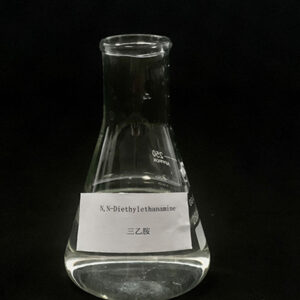Amine nitriles, compounds containing both amine and nitrile functional groups, can exhibit interesting stereochemical effects in chemical reactions. The stereochemistry of reactions involving amine nitriles is influenced by factors such as the nature of the reaction, the geometry around the reacting centers, and the presence of stereocenters.
Here are some ways in which amine nitriles can impact stereochemistry:
- Chirality Transfer in Nucleophilic Addition:
- In nucleophilic addition reactions, if the amine nitrile possesses a chiral center, the stereochemistry of the starting material may be transferred to the product.
- The attack of a nucleophile on the nitrile carbon can occur with stereochemical retention or inversion, depending on the reaction mechanism and conditions.
- Stereochemistry in Hydrogenation Reactions:
- Hydrogenation of amine nitriles may result in the reduction of the nitrile group to an amine.
- Depending on the reaction conditions, China Amine Nitriles manufacturers stereoselectivity in the hydrogenation process can influence the stereochemistry of the final amine product.
- Amination Reactions and Stereocenters:
- Amination reactions involving amine nitriles can introduce additional stereocenters.
- The stereochemistry of the amination process depends on factors such as the nature of the nitrogen source and the reaction conditions.
- Influence of Catalysts:
- Catalyzed reactions, especially those involving transition metal catalysts, can influence the stereochemistry of reactions with amine nitriles.
- Chiral catalysts, for instance, may induce stereocontrol in certain transformations.
- Conformational Effects in Amine Nitriles:
- The conformational flexibility of amine nitriles, particularly those with multiple substituents, can influence the stereochemistry of reactions.
- The relative arrangement of substituents may affect the stereochemical outcome of reactions.
- Asymmetric Synthesis with Amine Nitriles:
- Amine nitriles can be employed in asymmetric synthesis to access enantiomerically enriched compounds.
- Chiral auxiliaries or ligands may be used to control the stereochemistry of reactions, particularly in transformations involving the nitrile group.
- Chelation and Coordination Effects:
- In reactions where coordination to a metal center is involved, chelation effects can influence the stereochemistry.
- The coordination geometry and the nature of ligands can impact the stereochemical outcome.
- Stereochemistry in Ring-Forming Reactions:
- Ring-forming reactions involving amine nitriles can lead to the creation of stereocenters within the formed ring.
- The geometry of the reacting centers and the regioselectivity of the ring closure contribute to the stereochemistry.
- Stability of Stereoisomers:
- The stability of stereoisomers, China Amine Nitriles suppliers particularly in amine nitriles with multiple chiral centers, can affect the observed stereochemistry.
- Thermodynamic and kinetic factors may play a role in determining the predominant stereoisomer.
- Influence on Reaction Mechanisms:
- The stereochemistry of reaction intermediates in processes involving amine nitriles can impact the overall stereochemical outcome.
- Understanding the reaction mechanism is crucial for predicting and controlling stereochemistry.
It is important to consider the specific reaction type, reagents, and reaction conditions when analyzing the stereochemistry of reactions involving amine nitriles. The presence of chiral centers, the geometry of reacting centers, and the influence of external factors such as catalysts all contribute to the stereochemical outcome in these reactions.
